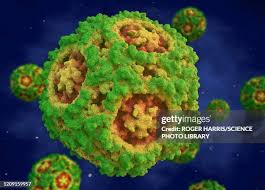
Introduction
Canine parvovirus (CPV) is a highly contagious viral disease that poses a significant threat to dogs, particularly puppies who are not fully vaccinated. With its prevalence increasing in various regions, understanding CPV has become crucial for dog owners, veterinary professionals, and animal shelters. Timely recognition of symptoms and effective prevention measures can help mitigate this serious health risk, safeguarding pets’ lives and promoting overall public health.
What is Canine Parvovirus?
Canine parvovirus was first identified in the late 1970s and has since become one of the most common viral infections among dogs. It primarily affects the gastrointestinal system, leading to severe enteritis and subsequent dehydration. The virus is resilient in the environment, capable of surviving for months on contaminated surfaces, emphasizing the importance of stringent hygiene practices.
Symptoms and Diagnosis
Symptoms of CPV typically manifest 3 to 14 days post-infection. Key indicators include:
- Severe vomiting
- Profuse diarrhea (often bloody)
- Loss of appetite
- Lethargy
- Fever
A veterinarian can perform diagnostic tests, including ELISA tests, to confirm the presence of the virus. Early diagnosis is crucial for effective treatment.
Treatment Options
While there’s no specific antiviral treatment for canine parvovirus, supportive care is essential. Treatment often includes:
- Fluid therapy to combat dehydration
- Medications to control vomiting
- Antibiotics to prevent secondary bacterial infections
Severely affected dogs may require hospitalization, while lighter cases might be manageable at home under veterinary guidance. The prognosis improves dramatically with early intervention.
Preventive Measures
Preventing canine parvovirus is primarily centered around vaccination. Puppies should receive a series of parvovirus vaccinations starting at around six weeks of age, followed by booster shots as recommended by veterinarians. Furthermore, dog owners should:
- Avoid exposing their unvaccinated puppies to potentially contaminated environments, such as dog parks and kennels.
- Practice good hygiene, including cleaning and disinfecting those areas frequented by pets.
- Be vigilant regarding their dog’s health and consult a vet promptly if any CPV symptoms arise.
Conclusion
Canine parvovirus remains a significant threat to dogs, but with awareness and proactive measures, its impact can be minimized. Vaccination stands out as the most effective method of prevention, while pet owners must stay informed and vigilant. By prioritizing the health of our furry companions, we can protect them from this viral menace and ensure they lead happy, healthy lives.



